Study on Detection Technology for High-Speed Railway Slope Sliding Surface Based on Complex Observation of Electrical Resistivity Tomography
Abstract
1. Introduction
2. Fundamental Theory
2.1. DC Resistivity Method
2.2. Finite Element Forward Modeling
2.3. Gauss–Newton Inversion
3. Numerical Simulation
3.1. Model Design and Forward Analysis
3.2. Working Apparatus Design and Inversion
4. Engineering Practice
4.1. Overview of Practice Area
4.2. Working Methods
4.3. Results and Analysis
5. Discussion
- (1)
- Adaptive Configuration Design: Techniques must be developed to dynamically adjust survey layouts based on topographical complexity and morphological features.
- (2)
- 3D Adaptive Systems: Research should focus on 3D adaptive design techniques for survey configurations tailored to intricate topographies to enhance spatial accuracy in slip surface characterization.
6. Conclusions
Author Contributions
Funding
Institutional Review Board Statement
Informed Consent Statement
Data Availability Statement
Acknowledgments
Conflicts of Interest
References
- State Council Leading Group for the First National Comprehensive Risk Census of Natural Disasters. Bulletin of the First National Comprehensive Risk Census of Natural Disasters; State Council of the People’s Republic of China: Beijing, China, 2024; accepted. [Google Scholar]
- Bardel, T. O antropogenicznych przyczynach powstania osuwiska na zboczu byłej kopalni iłów “Kantoria” w Tarnowie. Górnictwo I Geol. 2012, 7, 35–47. [Google Scholar]
- Xu, J.; Wei, Y.; Li, C. Discussion on monitoring technology proposal for high and steep side-Slope on railway in mountain area. In Proceedings of the 1st International Workshop on High-Speed and Intercity Railways; Springer: Berlin/Heidelberg, Germany, 2012; Volume 1, pp. 289–307. [Google Scholar]
- Bianchi, R.; Brambilla, F.; Hojat, A.; Tresoldi, G.; Zanzi, L. Long-term ERT monitoring data analysis to set slope instability attention thresholds based on water level fluctuations. In Proceedings of the 7th International Conference on Geotechnical and Geophysical Site Characterization, Marcos Arroyo & Antonio Gens, Barcelona, Spain, 18–21 June 2024; pp. 362–369. [Google Scholar]
- Li, Y.; Meng, H.; Dong, Y.; Hu, S.E. Types and Characteristics of Geological Disasters in China: Analysis Based on the Achievements of National County and City Level Geological Disaster Surveys. Chin. J. Geol. Hazard Control 2004, 15, 6–12. [Google Scholar] [CrossRef]
- Gao, J. Research on Slope Landslide Early Warning System Based on ANN-LSTM Hybrid Prediction Method. Ph.D. Dissertation, Jiangxi University of Science and Technology, Ganzhou, China, 2022. [Google Scholar] [CrossRef]
- Jiang, S.-H.; Li, D.-Q.; Zhang, L.-M.; Zhou, C.-B. Slope reliability analysis considering spatially variable shear strength parameters using a non-intrusive stochastic finite element method. Eng. Geol. 2014, 168, 120–128. [Google Scholar] [CrossRef]
- Kumar, P.R.; Muthukkumaran, K.; Sharma, C. Technological advancements and sustainable practices in rock slope stability—Critical review. Phys. Chem. Earth Parts A/B/C 2024, 136, 103699. [Google Scholar] [CrossRef]
- Bery, A.A. High Resolution in Seismic Refraction Tomography for Environmental Study. Int. J. Geosci. 2013, 4, 792–796. [Google Scholar] [CrossRef]
- Li, C.; Wei, L.; Xu, Q.; Yang, L.; Li, J.; Wan, X. Structural Detection and Stability Monitoring of Deep Strata on a Slope Using High-Density Resistivity Method and FBG Strain Sensors. Appl. Sci. 2024, 14, 3272. [Google Scholar] [CrossRef]
- Liu, X.R.; Zhang, L.; Yu, Y.; Liu, K. Study on the landslide mechanism of the Dayan slope in Youyang under rainfall conditions. Rock Soil Mech. 2013, 34, 2898–2904. [Google Scholar] [CrossRef]
- Wang, Y. Study on failure mechanism and stability of a high-steep slope for a high-speed railway. Railw. Investig. Surv. 2021, 47, 60–65+80. [Google Scholar] [CrossRef]
- Li, B. Deformation Monitoring of Railway Bridge Slope Adjacent to Landslide-Prone Mountain Area. Railw. Investig. Surv. 2024, 50, 28–33. [Google Scholar] [CrossRef]
- Wang, C.-Y.; Sundaram, P.; Goodman, R.E. Electrical resistivity changes in rocks during frictional sliding and fracture. Rock Frict. Earthq. Predict. 1978, 116, 717–731. [Google Scholar] [CrossRef]
- Perrone, A.; Piscitelli, S.; Lapenna, V. Electrical resistivity tomographies for landslide monitoring: A review. Berichte Geol. 2017, 93, 129–134. [Google Scholar]
- Jia, Z.; Zhang, J.M. The Application of High-Density Resistivity Method to the Evaluation on the Stability of Gongchangling Open Pit’s Slope. Appl. Mech. Mater. 2014, 686, 327–332. [Google Scholar] [CrossRef]
- Rahmani, T.R.; Sari, D.P.; Akmam, A.; Amir, H.; Putra, A. Using the Schlumberger configuration resistivity geoelectric method to analyze the characteristics of slip surface at Solok. J. Phys. Conf. Ser. 2020, 1481, 012030. [Google Scholar] [CrossRef]
- Maniruzzaman, S.; Balaji, S.; Bhat, G.R. Assessment of rainfall-induced slope failures at Chakargoan, Port Blair, India, using 2D ERT and self-potential techniques. J. Earth Syst. Sci. 2024, 133, 223. [Google Scholar] [CrossRef]
- Juwono, A.M. Study of Subsurface Conditions of Southern Cross Road Using the Wenner-Schlumberger Method for Disaster Mitigation. Int. J. GEOMATE 2022, 23, 97–105. [Google Scholar] [CrossRef]
- Advanced Geosciences Inc. Instruction Manual for EarthImager 2D. Version 2.4.0, Advanced Geosciences Inc., 2009. Available online: https://www.agiusa.com/ (accessed on 20 May 2019).
- Tsai, W.-N.; Chen, C.-C.; Chiang, C.-W.; Chen, P.-Y.; Kuo, C.-Y.; Wang, K.-L.; Lin, M.-L.; Chen, R.-F. Electrical Resistivity Tomography (ERT) Monitoring for Landslides: Case Study in the Lantai Area, Yilan Taiping Mountain, Northeast Taiwan. Front. Earth Sci. 2021, 9, 737271. [Google Scholar] [CrossRef]
- Erginal, A.E.; Öztürk, B.; Ekinci, Y.L.; Demirci, A. Investigation of the nature of slip surface using geochemical analyses and 2-D electrical resistivity tomography: A case study from Lapseki area, NW Turkey. Environ. Geol. 2008, 58, 1167–1175. [Google Scholar] [CrossRef]
- Susilo, A.; Suryo, E.A.; Fitriah, F.; Sutasoma, M. Preliminary study of landslide in Sri Mulyo, Malang, Indonesia using resistivity method and drilling core data. GEOMATE J. 2018, 15, 161–168. [Google Scholar] [CrossRef]
- Syukri, M.; Anda, S.T.; Safitri, R.; Fadhli, Z.; Saad, R. Prediction of Soil Liquefaction Phenomenon in Banda Aceh and Aceh Besar, Indonesia using Electrical Resistivity Tomography (ERT). GEOMATE J. 2020, 18, 123–129. [Google Scholar] [CrossRef]
- Santosa, I.; Sulaksana, N.; Yuningsih, E.T.; Zakaria, Z. The Sliding Surface Determination of A Deep-seated Landslide on Cisumdawu Highway, West Java, Based on The Electrical Resistivity Tomography. Indones. J. Geosci. 2024, 11, 189–199. [Google Scholar] [CrossRef]
- Takeshhi, K. The topographic effect in resistivity prospecting. Geophys Explor (Butsuri-Tansa) 1953, 6, 51–54. [Google Scholar]
- Papazian, P.B. Topographic Modeling of Resistivity Surveys Using the Schwarz-Christoffel Transformation. Master’s Thesis, Colorado School of Mines, Golden, CO, USA, 1979. [Google Scholar]
- Du, H.; Wu, X. Three-dimensional unstructured finite element numerical modeling of time-domain induced polarization method under undulating terrain. J. Univ. Sci. Technol. China 2020, 50, 705–714. [Google Scholar]
- Dahlin, T.; Zhou, B. A numerical comparison of 2D resistivity imaging with 10 electrode arrays. Geophys. Prospect. 2004, 52, 379–398. [Google Scholar] [CrossRef]
- Dahlin, T.; Zhou, B. Multiple-gradient array measurements for multichannel 2D resistivity imaging. Near Surf. Geophys. 2005, 4, 113–123. [Google Scholar] [CrossRef]
- Wang, G.; Wang, Q.C.; Guo, G.L.; Yuan, W.Q.; Huang, P. Comparative study of different array configurations in high-density electrical method for geological investigation. Coal Sci. Technol. 2020, 39, 68–70. [Google Scholar] [CrossRef]
- Weili, G.; Xiankun, J.; Yun, B.; Jifei, C. Application of combined inversion with different array configurations of high-density electrical method in detecting coal mine goaf. Geotech. Investig. Surv. 2023, 51, 67–71. [Google Scholar]
- Zhou, B.; Bouzidi, Y.; Ullah, S.; Asim, M. A full-range gradient survey for 2D electrical resistivity tomography. Near Surf. Geophys. 2020, 18, 609–626. [Google Scholar] [CrossRef]
- Xiaolong, W.; Hong, F.; Huaguang, T.; Di, W. Forward modeling of direct current resistivity methods based on COMSOL Multiphysics. Coal Geol. Explor. 2011, 39, 76–80. [Google Scholar]
- Hao, Y.J.; Li, H.; Wu, Y. Research on advance detection of DC resistivity method in excavating roadways based on COMSOL. Coal Mine Mod. 2020, 6, 104–106. [Google Scholar] [CrossRef]
- Zhao, G.Y.; Wang, J.; Zhai, P.H.; Li, C.S.; Liu, L.J. Research on advance detection in mines using DC resistivity method based on COMSOL Multiphysics numerical simulation. Coal Sci. Technol. 2018, 37, 177–179. [Google Scholar] [CrossRef]
- Li, Z.Q.; Li, C.W.; Song, W.W.; Zhou, X.; Wu, S.Y.; Xiong, B. Three-dimensional magnetotelluric numerical simulation of undulating terrain based on COMSOL. Geol. Explor. 2022, 58, 107–117. [Google Scholar]
- Gao, W.F.; Wang, K.W.; Hu, A.S.; Wang, N.J. DC resistivity advance detection technology using three-point source excitation based on COMSOL. Coal Mine Saf. 2023, 54, 168–172. [Google Scholar] [CrossRef]
- Zeng, C. Research on Precise Leakage Quantification Assessment Method for Landfills Based on Electrical Methods and Its Application. Ph.D. Dissertation, Chongqing Jiaotong University, Chongqing, China, 2022. [Google Scholar] [CrossRef]
- Huang, R.; Xu, Q. Geohazard Process Simulation and Process Control: Theoretical Framework of Deformation Mechanics-Based Geohazard Evaluation and Mitigation Design. Prog. Nat. Sci. 1999, 9, 124–130. [Google Scholar]
- Duncan, J.M.; Wright, S.G.; Brandon, T.L. Soil Strength and Slope Stability; John Wiley & Sons: New York, NY, USA, 2014. [Google Scholar]
- Varnes, D.J. Landslide types and processes. Landslides Eng. Pract. 1958, 24, 20–47. [Google Scholar]
- Yingren, Z.; Zuyu, C.; Gongxian, W.; Tianqing, L. Slope and Landslide Engineering Mitigation; China Communications Press: Beijing, China, 2007; accepted. [Google Scholar]
- Zhou, B.; Dahlin, T. Properties and effects of measurement errors on 2D resistivity imaging surveying. Near Surf. Geophys. 2003, 1, 105–117. [Google Scholar] [CrossRef]
- Yang, Y.S.; Yeh, H.F.; Ke, C.C.; Wei, L.W. Assessing shallow slope stability using electrical conductivity data and soil hydraulic characteristics. Eng. Geol. 2024, 331, 107447. [Google Scholar] [CrossRef]
- Wei, L.; Zeng, Z.; Yan, J. Factors Affecting the Stability of Loess Landslides: A Review. Appl. Sci. 2024, 14, 2735. [Google Scholar] [CrossRef]
- Chung, C.-C.; Lin, C.-P.; Yang, S.-H.; Lin, J.-Y.; Lin, C.-H. Investigation of non-unique relationship between soil electrical conductivity and water content due to drying-wetting rate using TDR. Eng. Geol. 2019, 252, 54–64. [Google Scholar] [CrossRef]

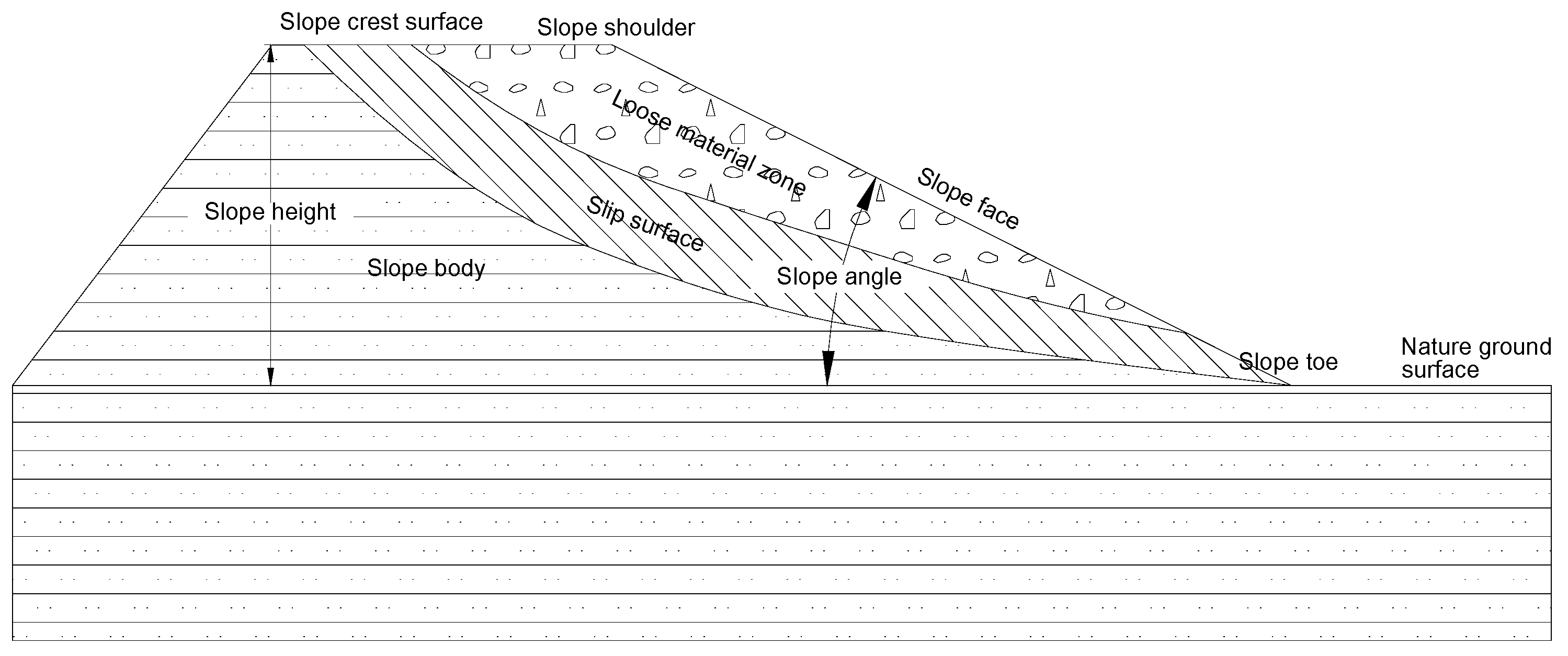
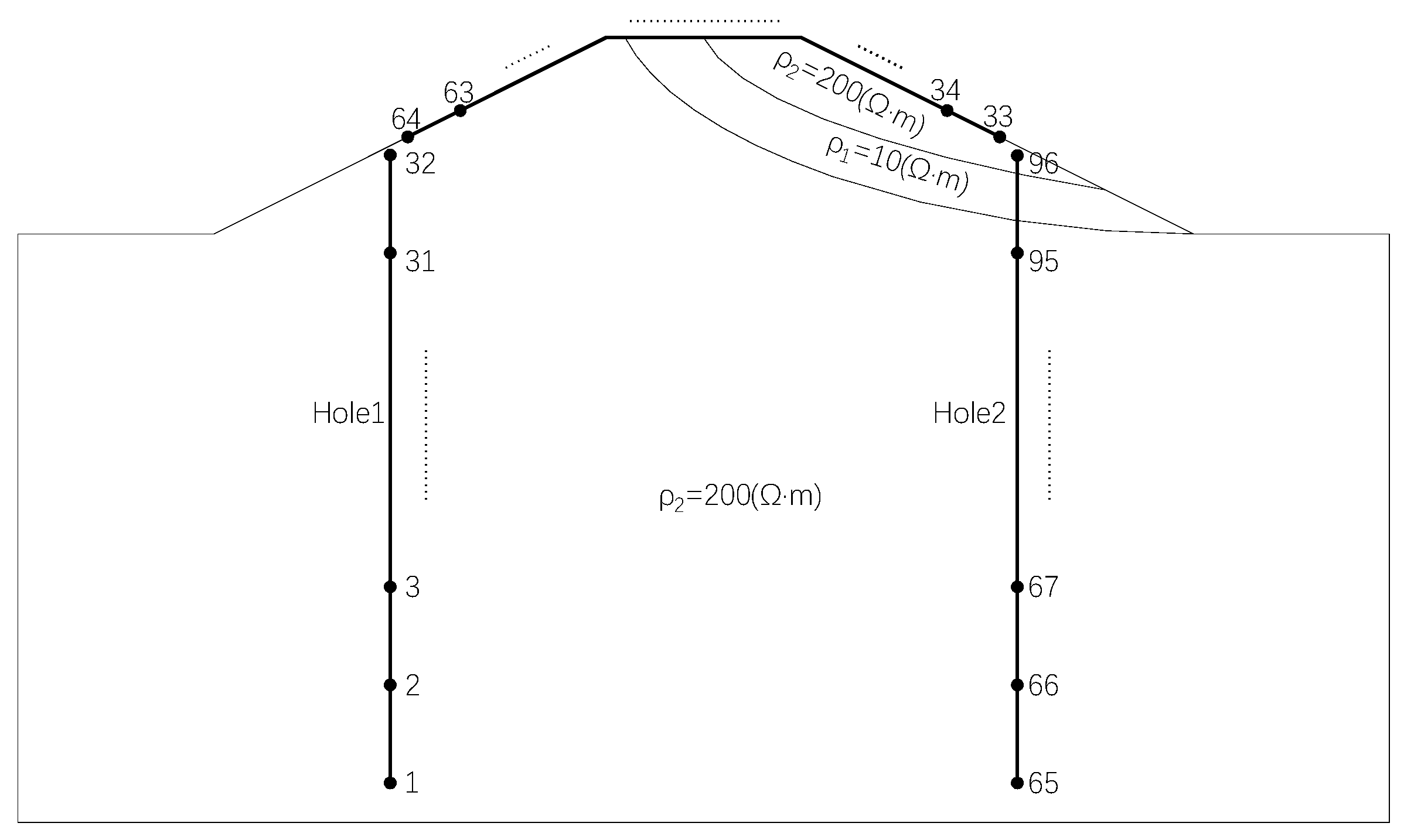
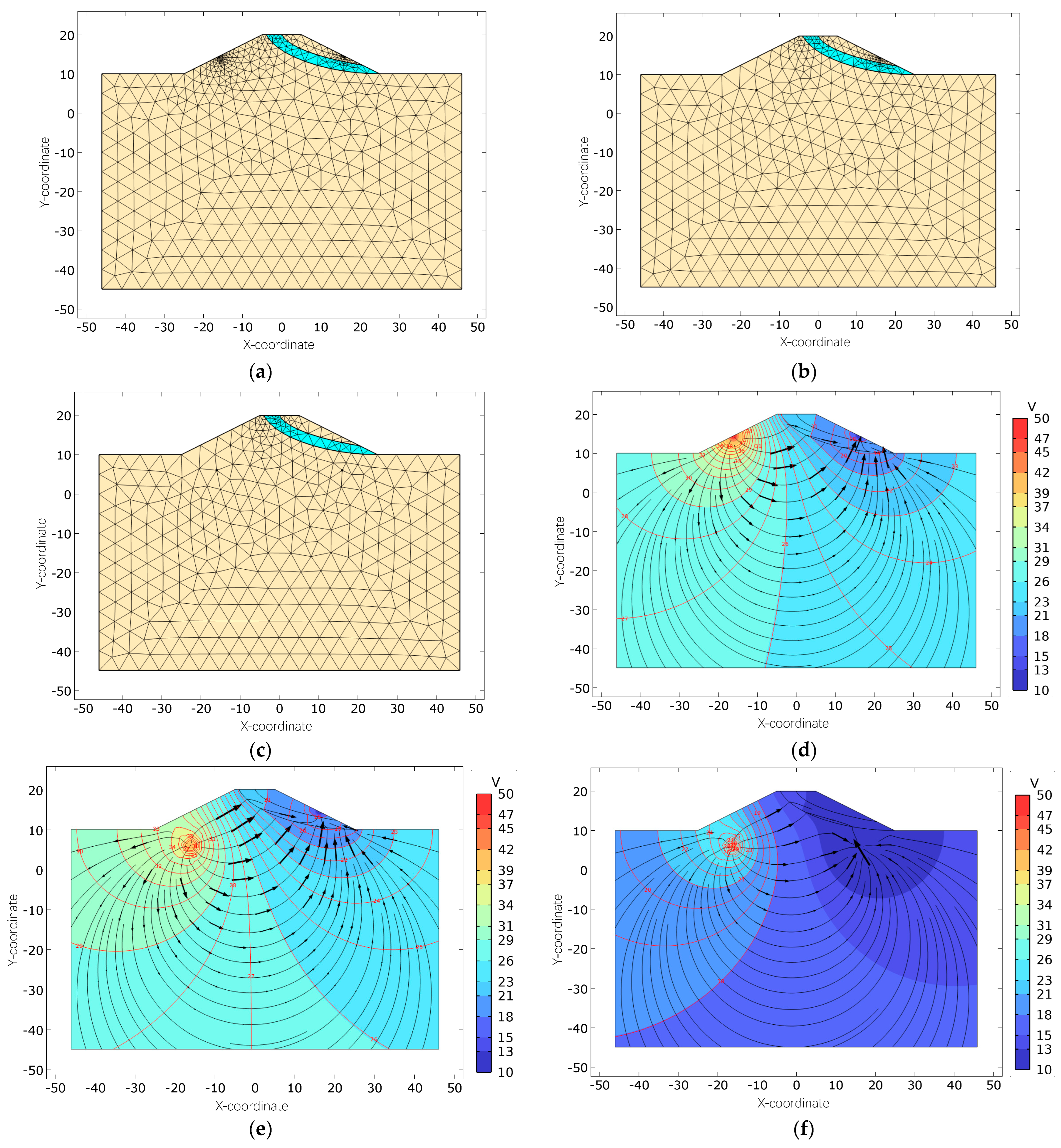
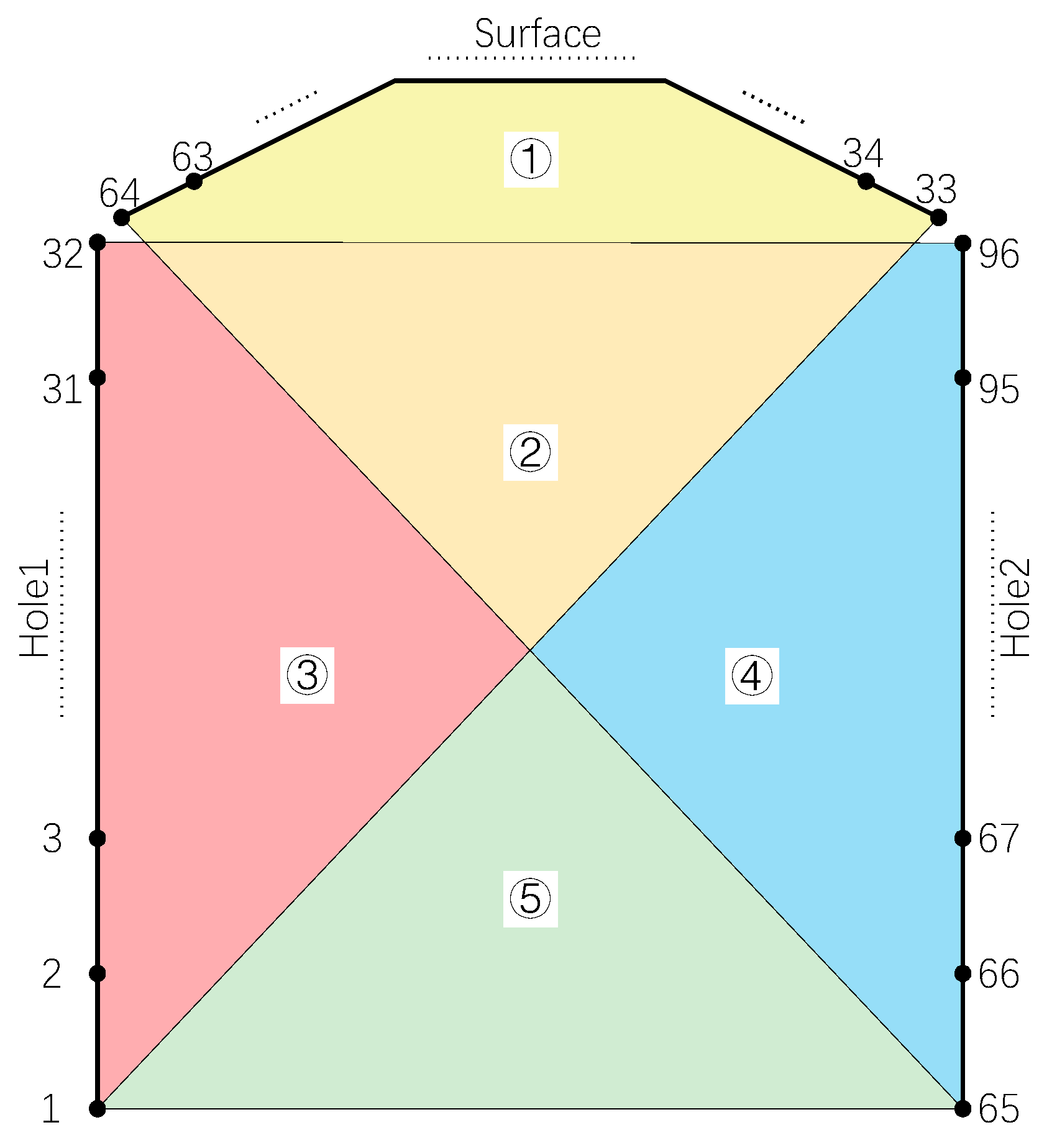
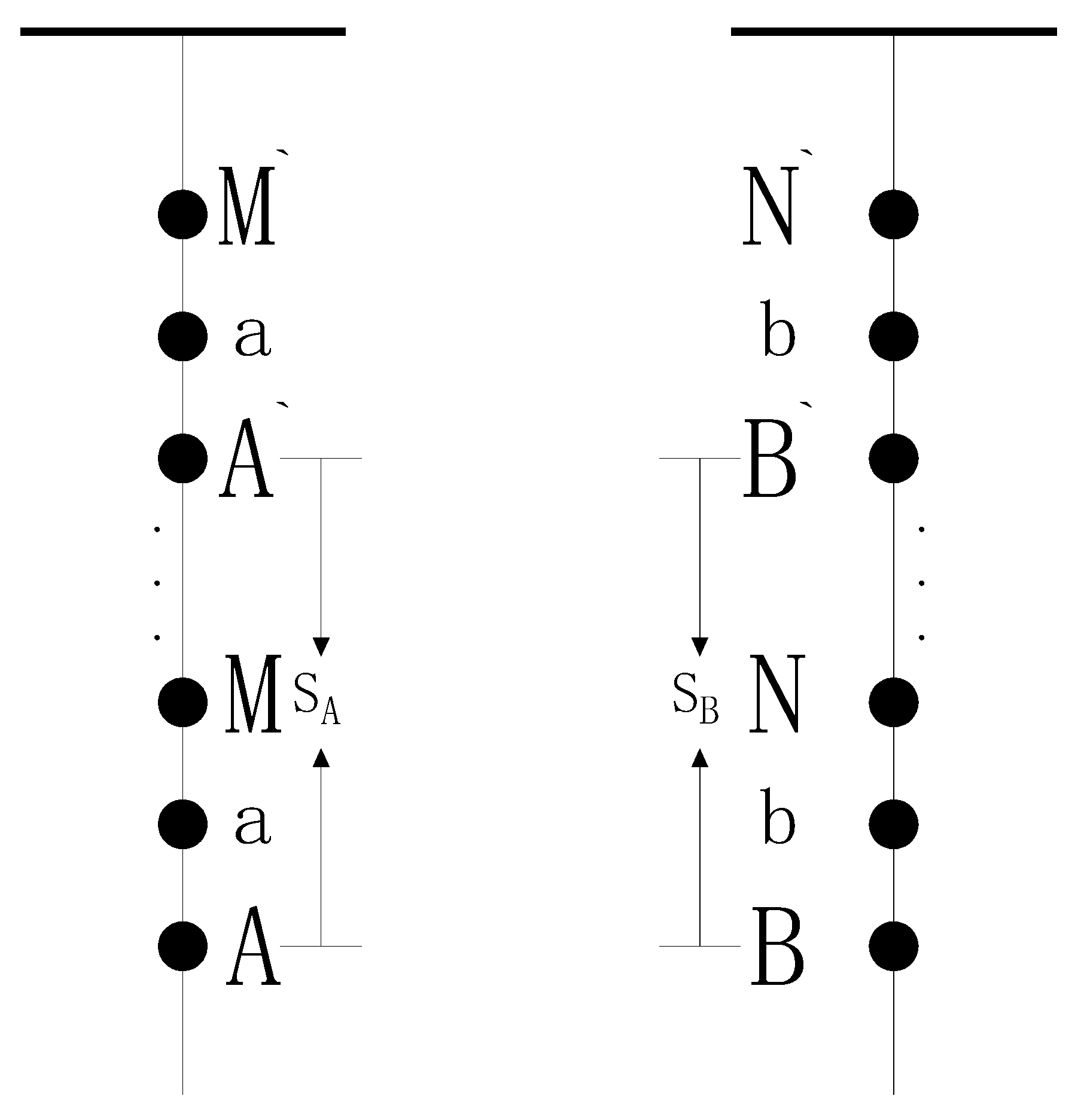
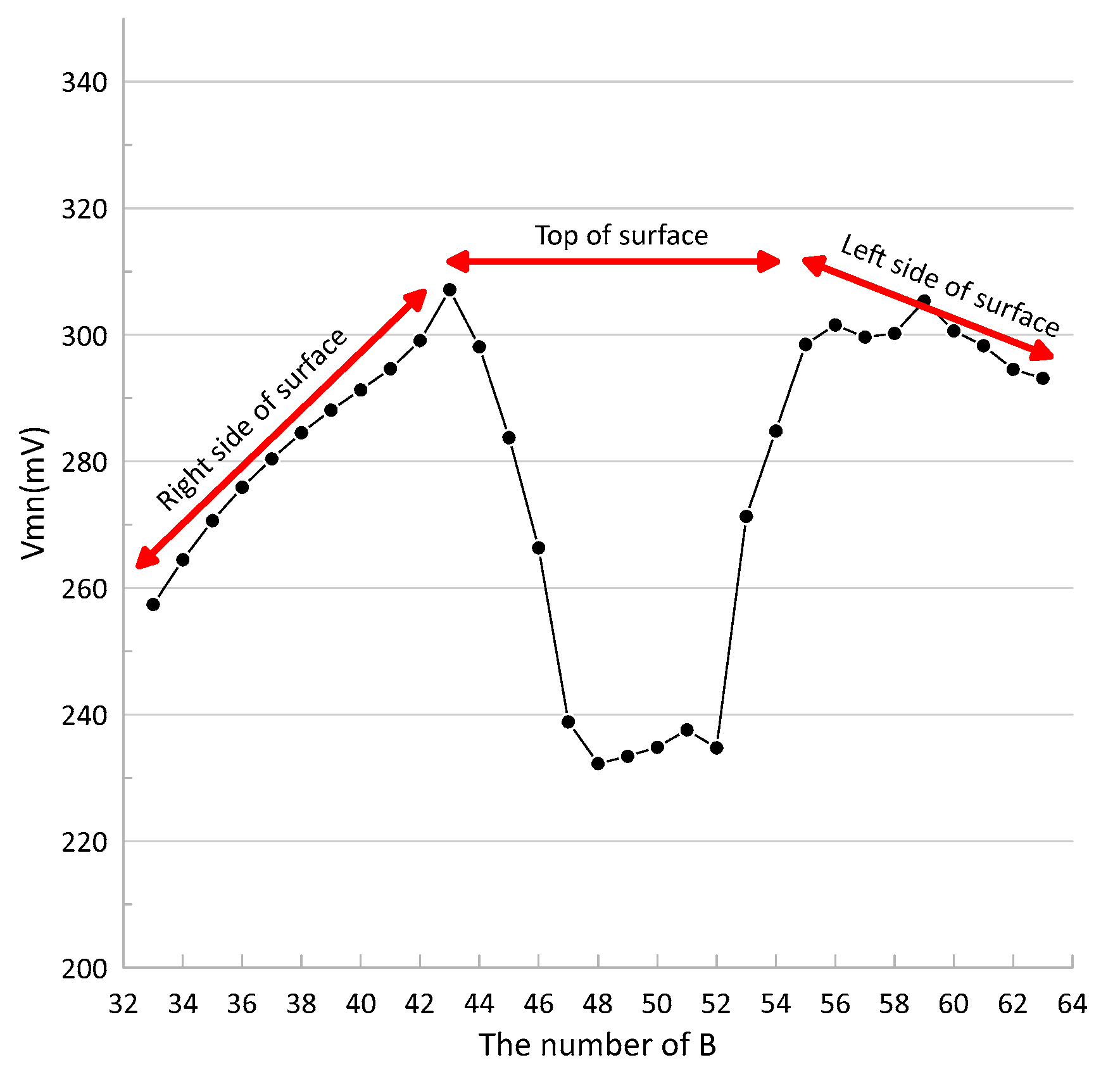
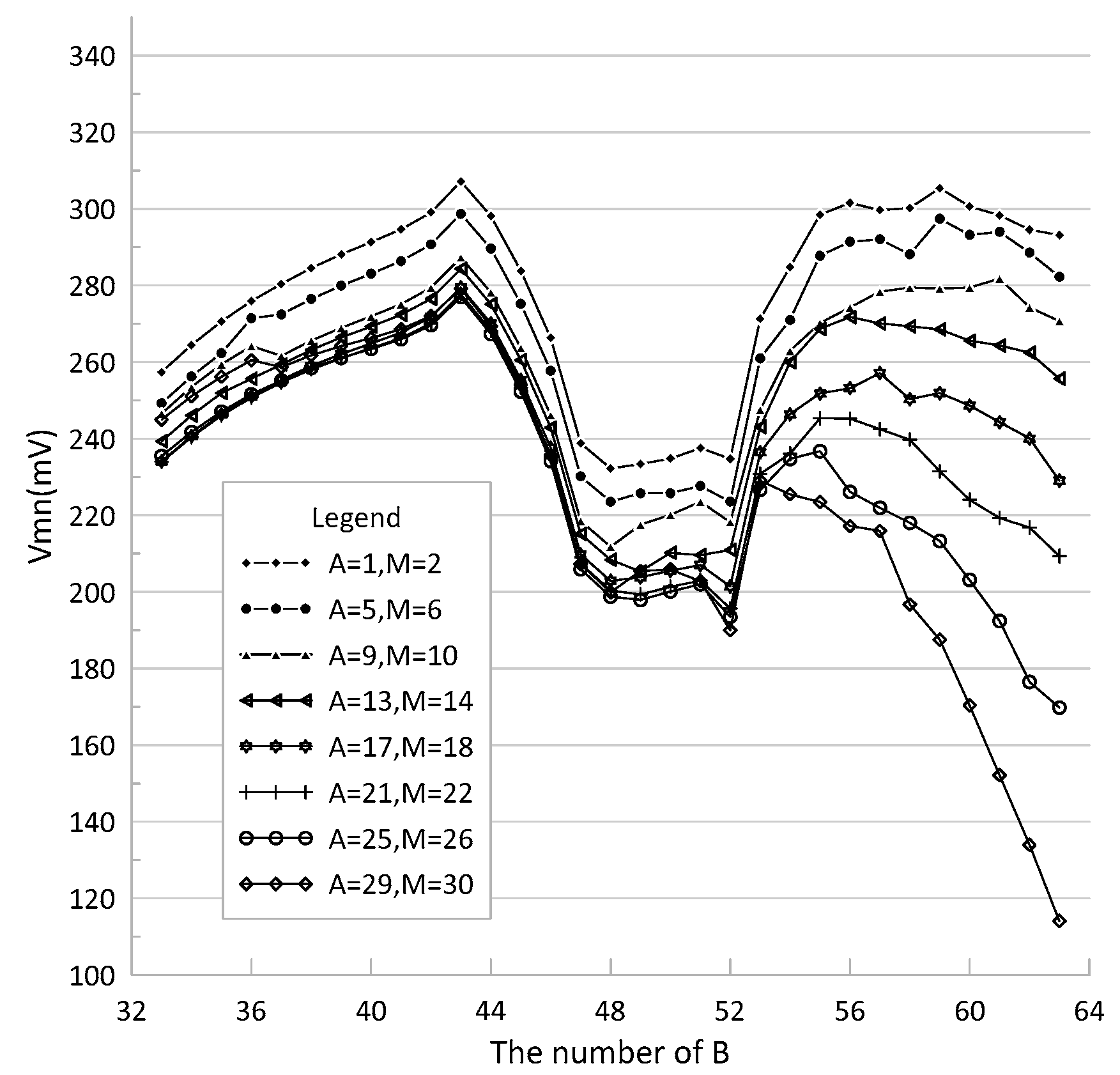

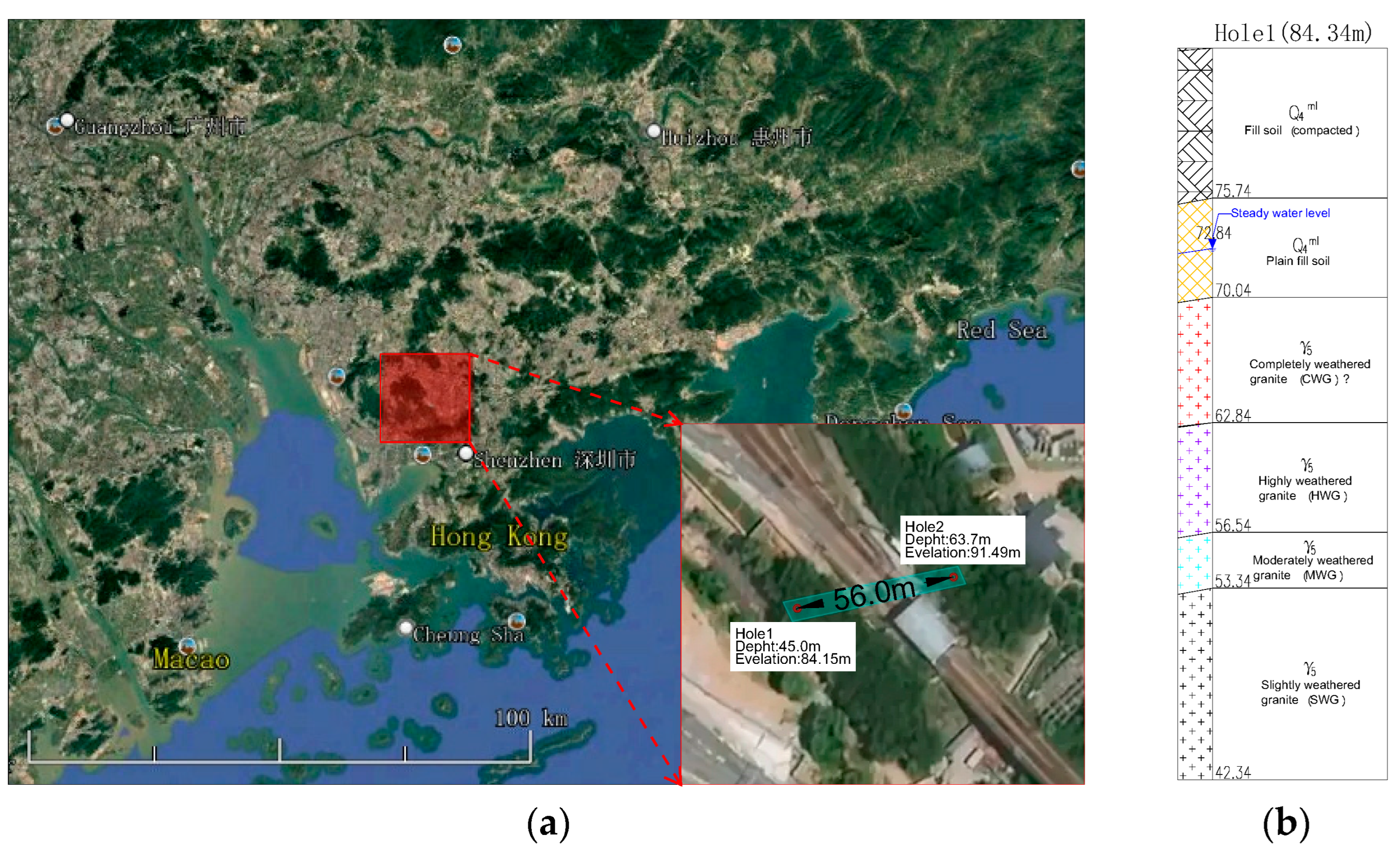
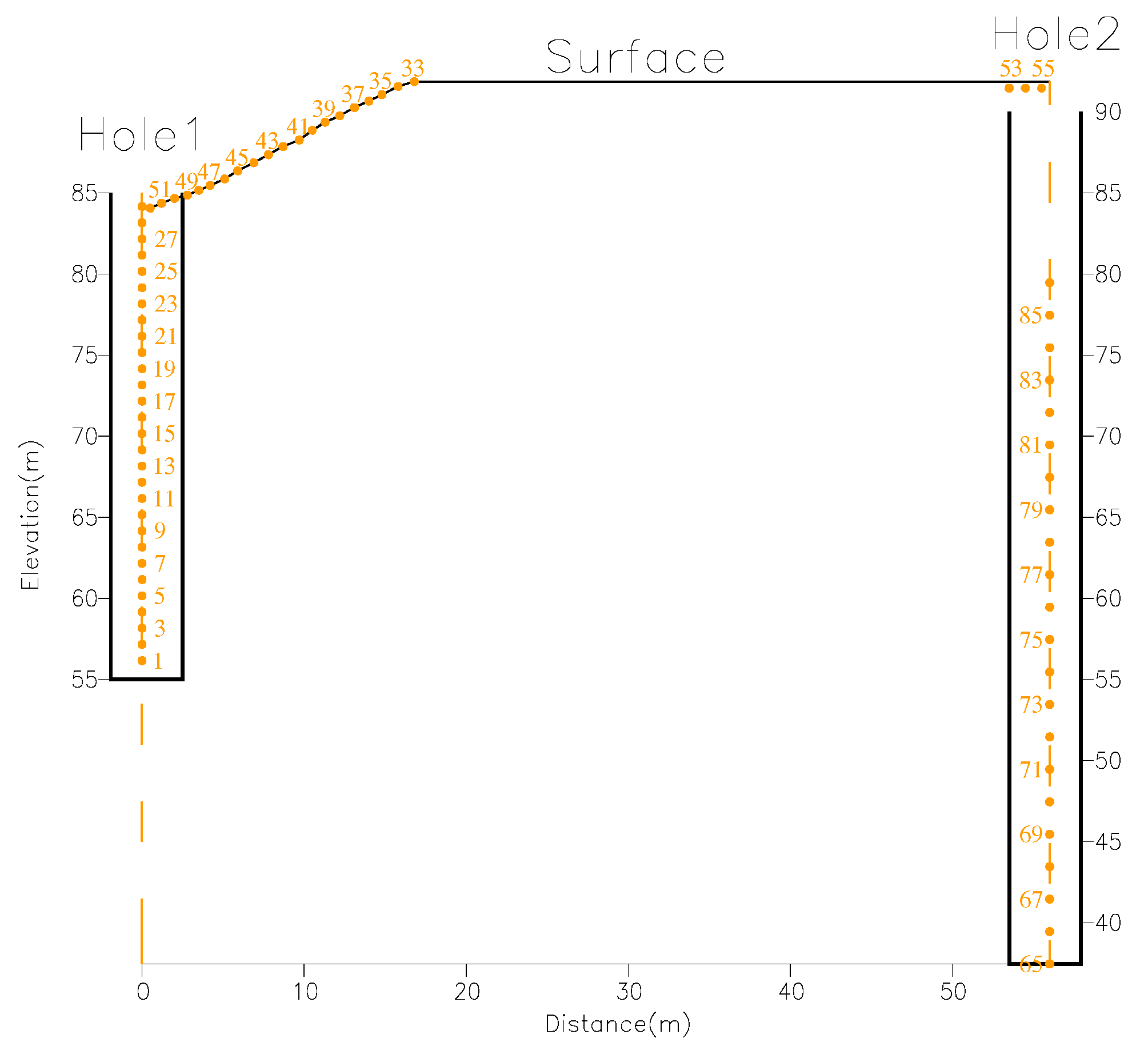

Disclaimer/Publisher’s Note: The statements, opinions and data contained in all publications are solely those of the individual author(s) and contributor(s) and not of MDPI and/or the editor(s). MDPI and/or the editor(s) disclaim responsibility for any injury to people or property resulting from any ideas, methods, instructions or products referred to in the content. |
© 2025 by the authors. Licensee MDPI, Basel, Switzerland. This article is an open access article distributed under the terms and conditions of the Creative Commons Attribution (CC BY) license (https://creativecommons.org/licenses/by/4.0/).
Share and Cite
Li, H.; Wang, F.; Tang, J.; Liu, Y.; Wang, G.; Jia, X. Study on Detection Technology for High-Speed Railway Slope Sliding Surface Based on Complex Observation of Electrical Resistivity Tomography. Appl. Sci. 2025, 15, 9091. https://doi.org/10.3390/app15169091
Li H, Wang F, Tang J, Liu Y, Wang G, Jia X. Study on Detection Technology for High-Speed Railway Slope Sliding Surface Based on Complex Observation of Electrical Resistivity Tomography. Applied Sciences. 2025; 15(16):9091. https://doi.org/10.3390/app15169091
Chicago/Turabian StyleLi, Hongli, Feng Wang, Jinyun Tang, Yansheng Liu, Guofu Wang, and Xiaobo Jia. 2025. "Study on Detection Technology for High-Speed Railway Slope Sliding Surface Based on Complex Observation of Electrical Resistivity Tomography" Applied Sciences 15, no. 16: 9091. https://doi.org/10.3390/app15169091
APA StyleLi, H., Wang, F., Tang, J., Liu, Y., Wang, G., & Jia, X. (2025). Study on Detection Technology for High-Speed Railway Slope Sliding Surface Based on Complex Observation of Electrical Resistivity Tomography. Applied Sciences, 15(16), 9091. https://doi.org/10.3390/app15169091






